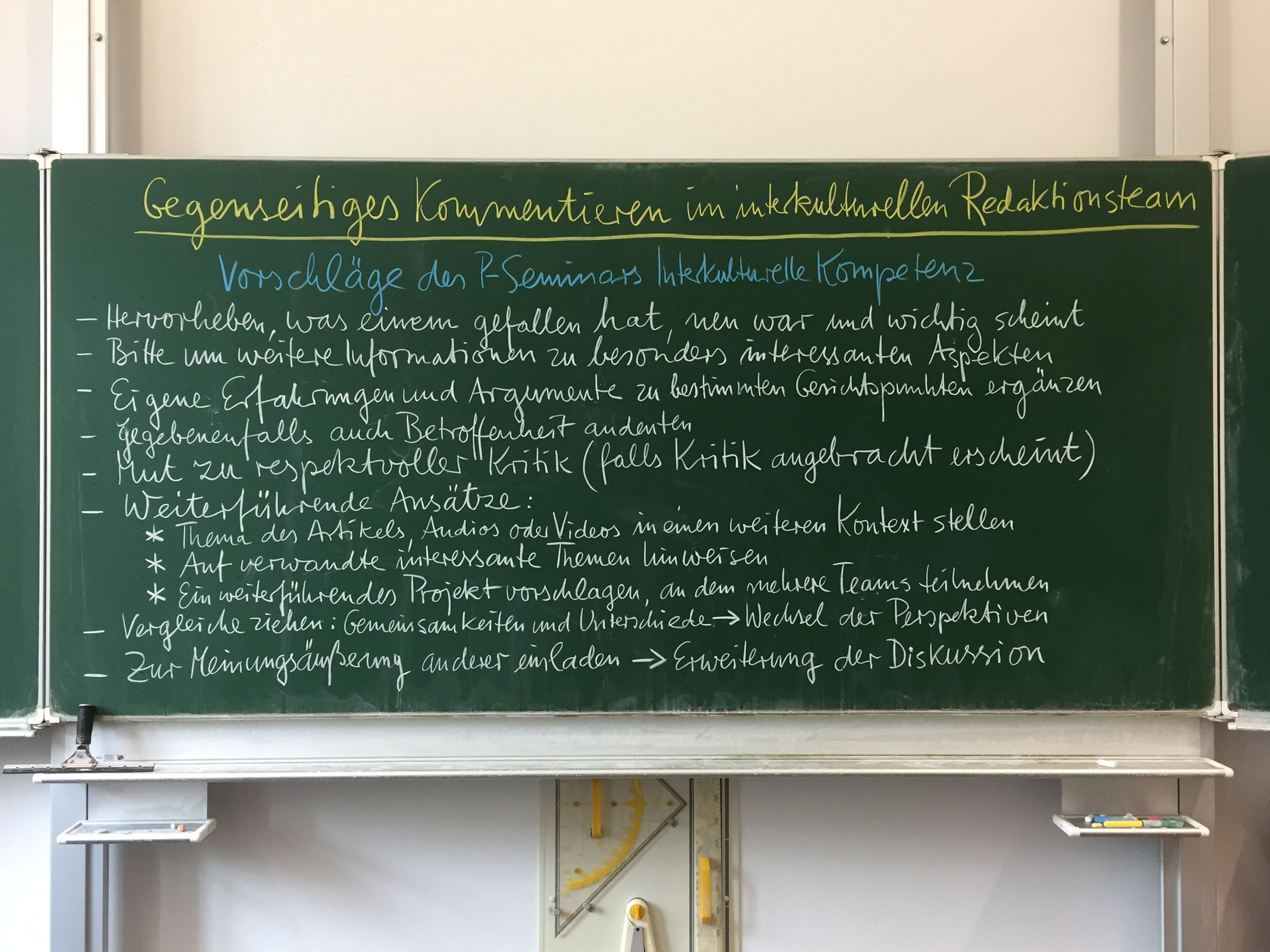About Commenting. An Outline of a Tutorial
by Lothar Thiel (Project Manager) on 2017-09-22

A Tutorial for the Intercultural Editors’ Team – Proposals of the Project Seminar Intercultural Competence at the Gisela-Gymnasium München / Germany
The cooperation of young editors within the framework of an intercultural youth magazine like trait d’union is on the one hand broadening the horizon of the participants. On the other hand, however, their communication requires a high sensibility as to the cultural diversity of values and attitudes.
If possible, the partners’ contributions (texts and pictures, audios and videos) should not only be lauded or criticized, because they can be the base for a fruitful exchange of experiences and ideas between the editors and even initiate new contributions, realized in cooperation.
This is why the students of the Project Seminar Intercultural Competence at the Gisela-Gymnasium in Munich reflected about the specific needs in the field of commenting on the partners’ contributions.
Please give us your ideas, your consent or criticism by posting a comment here! So, maybe soon we will be able to set a common tutorial about commenting for our intercultural editors’ team.
Then you could ask for clarification (in case of need) and for further information about certain aspects of the contribution.
The next step could be adding your own experiences and thoughts as to particular facets of the commented post.
Drawing comparisons is always enriching your horizon, by discovering commonalities, similarities and differences in the fields of experiences and perspectives, attitudes and cultural backgrounds – and discussing about them respectfully with the partners.
You may also express your consent or dissent from the (or some) opinions and conclusions contained in the commented work. Of course, giving reasons is helpful to avoid misunderstandings and – perhaps – even to convince the partner from your point of view. If you think, that criticism is suitable, please level it in a frank, but always respectful way!
The commented posting may inspire another contribution that you produce on your own or in communication/cooperation with the editor who created the inspiring work or with other interested editors.
And now, please, show appreciation for your partners by commenting on their contributions!




